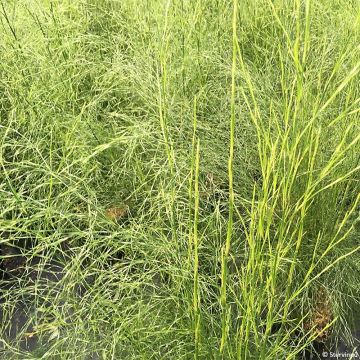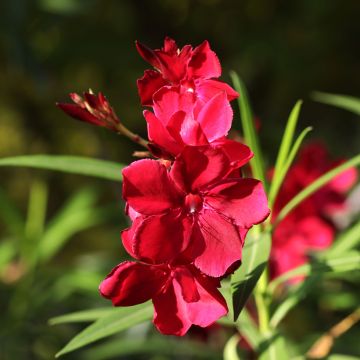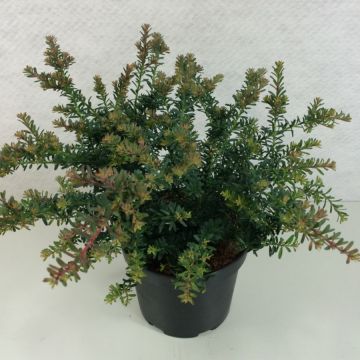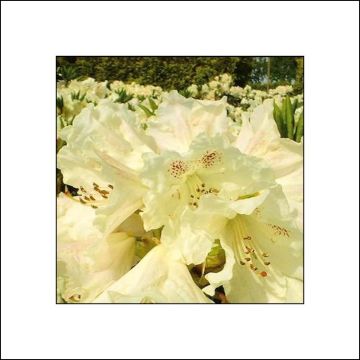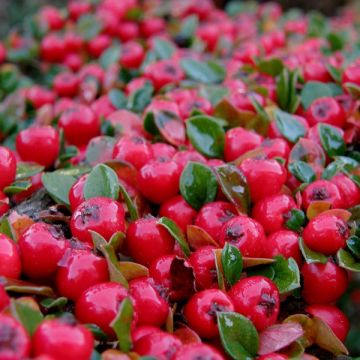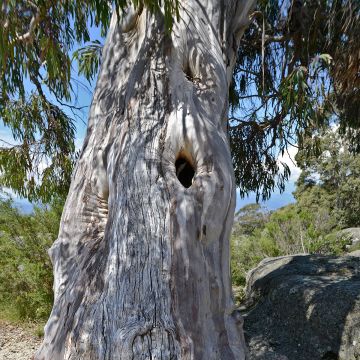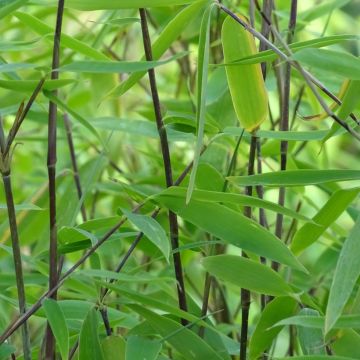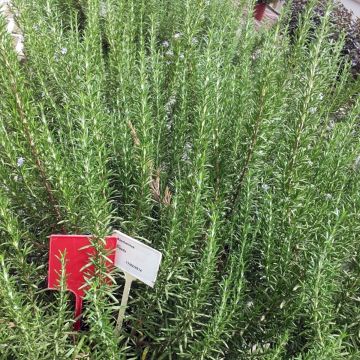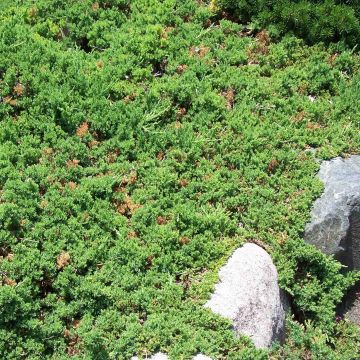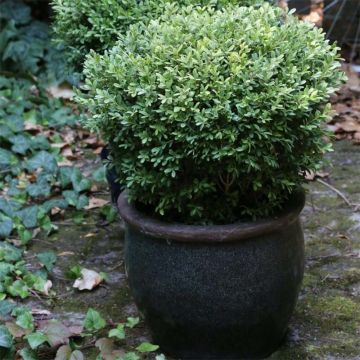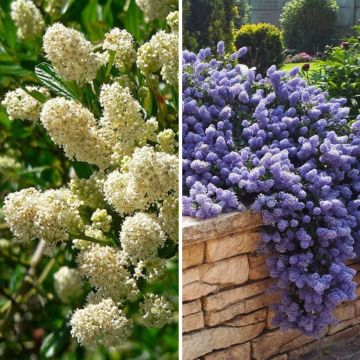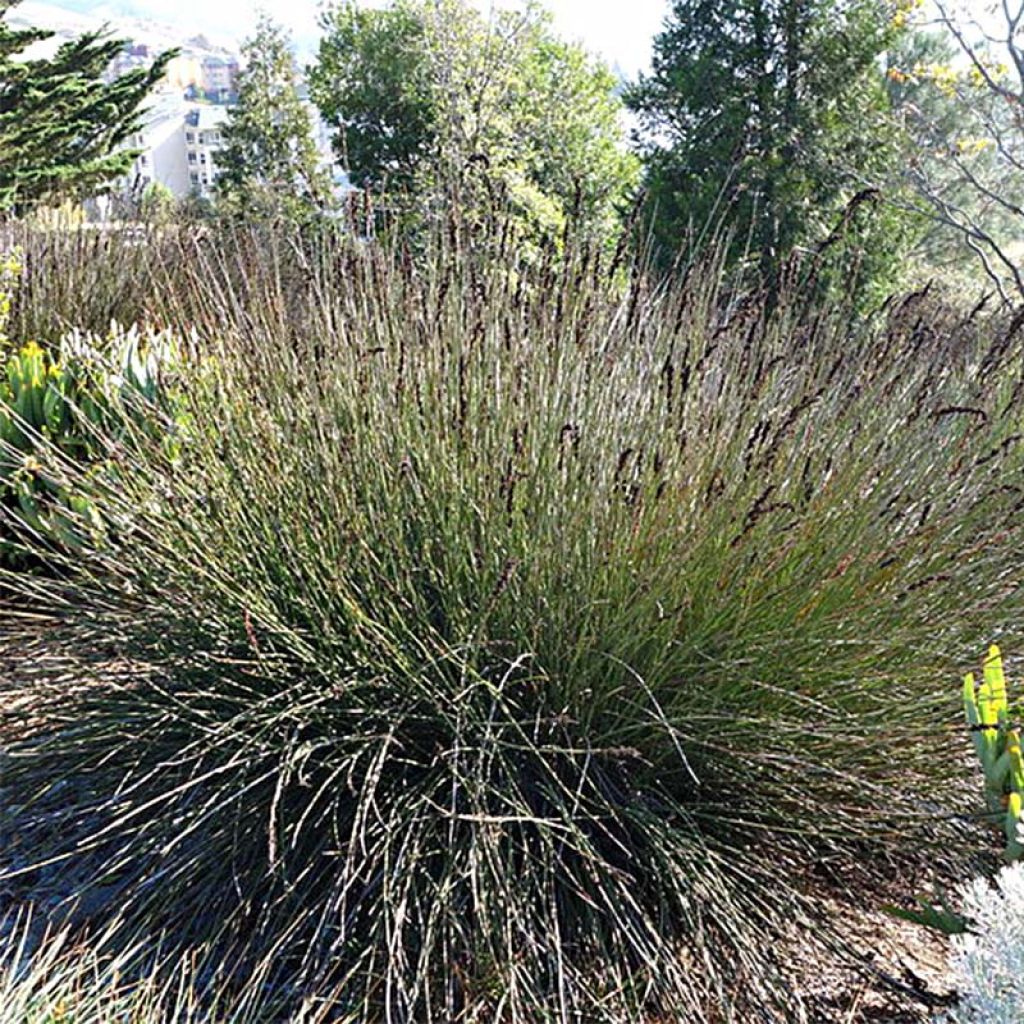

Elegia elephantina
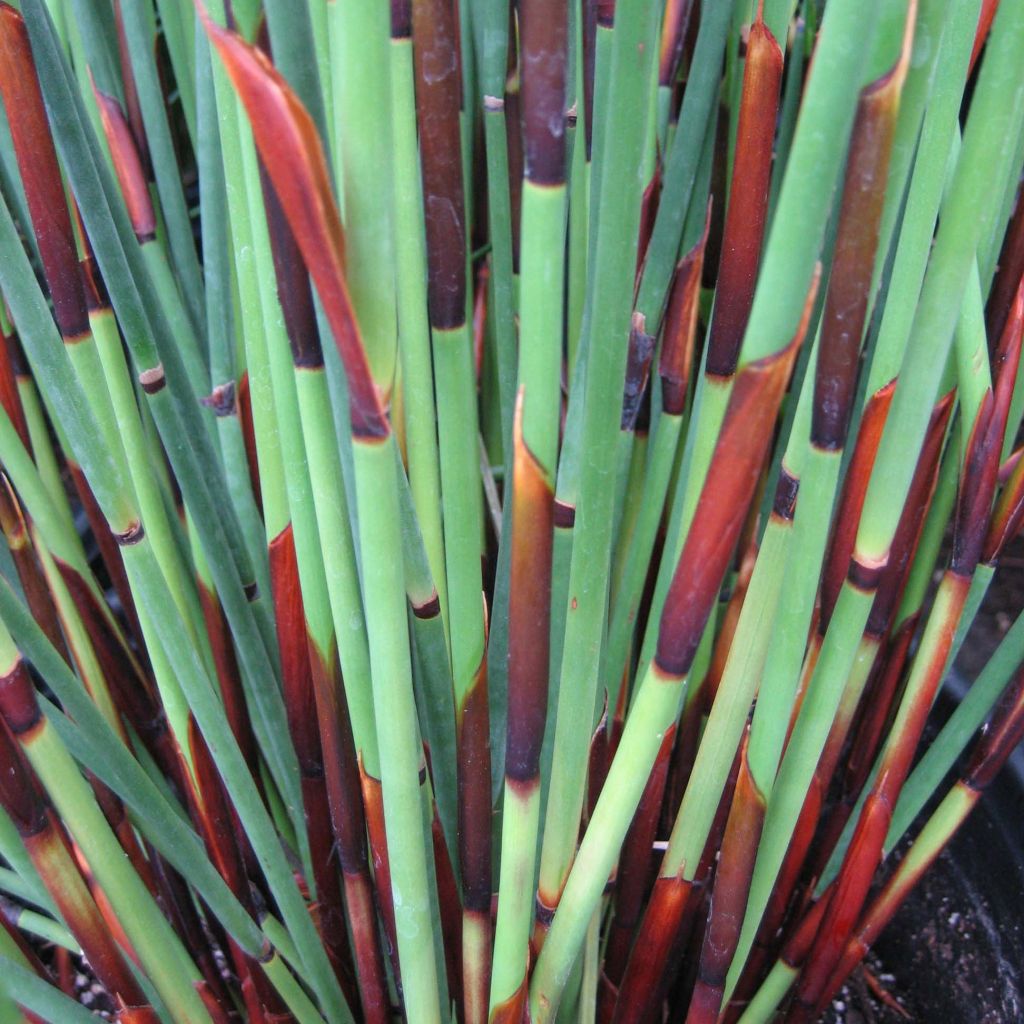

Elegia elephantina
Elegia elephantina
Elegia elephantina
Restio
This plant carries a 24 months recovery warranty
More information
We guarantee the quality of our plants for a full growing cycle, and will replace at our expense any plant that fails to recover under normal climatic and planting conditions.
From €5.90 for pickup delivery and €6.90 for home delivery
Express home delivery from €8.90.
Does this plant fit my garden?
Set up your Plantfit profile →
Description
Formerly called Chondropetalum elephantinum, now renamed Elegia elephantina, this tall South African perennial is part of a group of plants called Restio, still relatively unknown in Europe. Mainly native to the Cape Province, they resemble tall grasses, sedges, or rushes and are generally not very resistant to heavy frosts. Elegia elephantina forms a beautiful evergreen clump composed of slender stems punctuated with black nodes and topped in late summer with short spikes laden with dark seeds. Paired with grasses and sedges, this perennial creates magnificent compositions in mild climates. It is also a very attractive plant for the terrace, well-suited for container gardening.
Elegia elephantina, also locally known as Grand Cape Rush, is a botanical species endemic to the fynbos, a type of South African heathland swept by the wind and regularly ravaged by fires. In this region of the Cape, three major plant families are gathered: proteas, heathers, and restios, which include Elegia elephantina.
This tall herbaceous perennial forms a clump of stems emerging from the stump, narrow at the base and widening towards the top. It can reach a height of 1m (3 ft 4 in) with a crown diameter of 1.20m (3 ft 11 in) in open ground under our climates. When conditions are optimal, this plant spreads laterally to form large clumps over 1m (3 ft 4 in) in diameter. It develops slender cylindrical stems that grow somewhat zigzagged, more swollen at the base and with a green-grey colour. Along its stems, at regular intervals, branches emerge from almost black nodes. The stems lack true leaves. This plant is dioecious, meaning there are male and female plants. Flowering occurs in summer, earlier or later depending on the climate, in the form of short brown spikes, followed by the formation of chocolate brown capsules that remain decorative on the plant for a long time.
Restio is not very hardy, especially in its early years, but it is not demanding, even in sandy and poor soil. Its tall grass-like silhouette speckled with black makes a strong impression in a naturalistic border, a minimalist setting, or on a contemporary-style terrace. A well-established plant will be able to withstand -8/-9°C (17.6/15.8 °F) occasionally, allowing it to be grown in open ground in mild climates. Drought tolerant and resistant to salt spray, it is particularly well-suited for coastal gardens. It can also be used in a very decorative way on the terrace, to be stored over winter in cold climates. Whether in the ground or in a pot, it always looks good in association with the amazing Boronia, ferns, Dierama, Miscanthus, Carex comans, or even Gomphostigma virgatum. Its flowers are also very beautiful in dried bouquets.
Report an error about the product description
Elegia elephantina in pictures
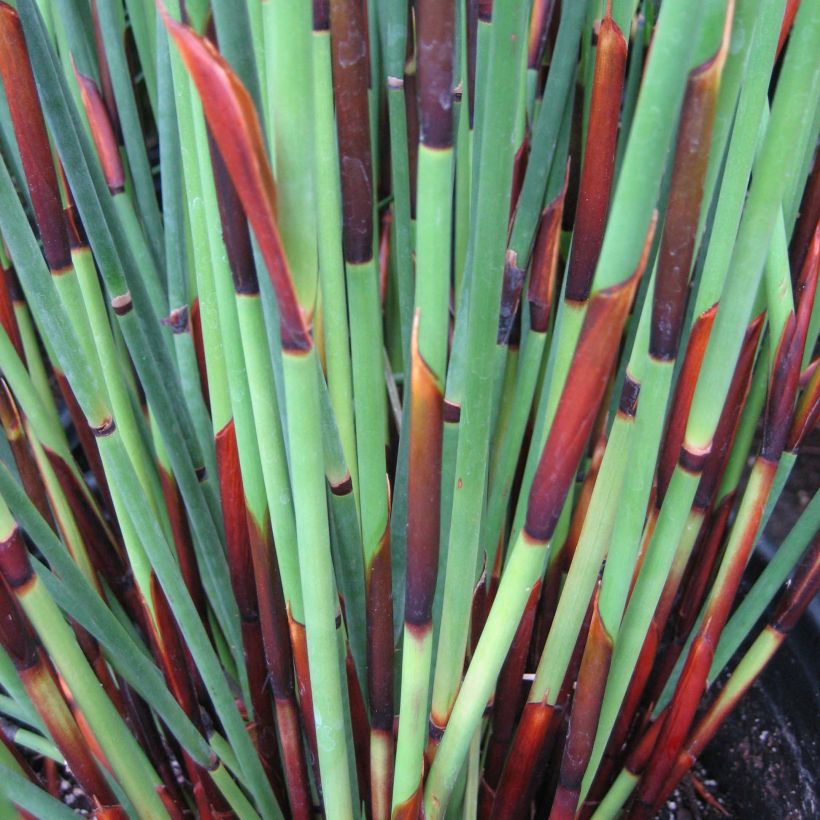

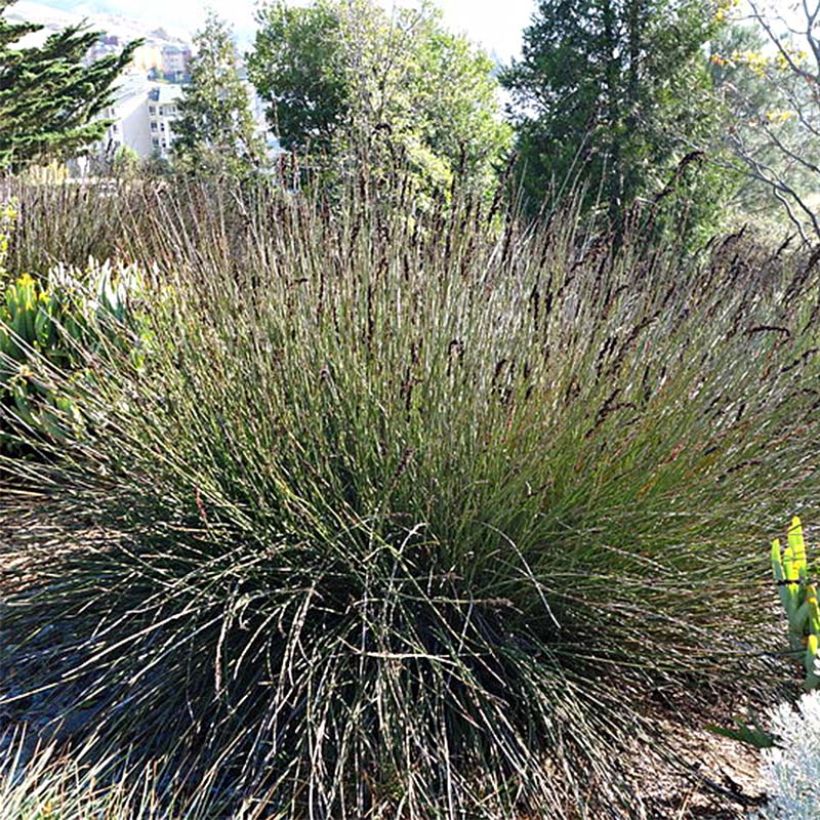

Plant habit
Flowering
Foliage
Botanical data
Elegia
elephantina
Restionaceae
Restio
South Africa
Other Restios
Planting and care
Elegia elephantina is best planted in spring, after the last frost, in light, well-drained, loose, deep soil, preferably sandy and poor, even very wet in winter and spring and dry in summer. Once established, this restio can withstand short frosts of around -8°C (17.6 °F). Choose a sunny exposure or, at worst, light shade. It requires no particular maintenance and has no enemies. In pots, use a substrate composed of leaf compost and coarse sand, and monitor watering. Apply green plant fertilizer from spring to autumn (avoid fertilizers rich in phosphorus, symbol P), diluted in water, every 15 days.
Propagation is done by dividing clumps in spring.
Planting period
Intended location
Care
-
, onOrder confirmed
Reply from on Promesse de fleurs
Evergreen shrubs
Haven't found what you were looking for?
Hardiness is the lowest winter temperature a plant can endure without suffering serious damage or even dying. However, hardiness is affected by location (a sheltered area, such as a patio), protection (winter cover) and soil type (hardiness is improved by well-drained soil).

Photo Sharing Terms & Conditions
In order to encourage gardeners to interact and share their experiences, Promesse de fleurs offers various media enabling content to be uploaded onto its Site - in particular via the ‘Photo sharing’ module.
The User agrees to refrain from:
- Posting any content that is illegal, prejudicial, insulting, racist, inciteful to hatred, revisionist, contrary to public decency, that infringes on privacy or on the privacy rights of third parties, in particular the publicity rights of persons and goods, intellectual property rights, or the right to privacy.
- Submitting content on behalf of a third party;
- Impersonate the identity of a third party and/or publish any personal information about a third party;
In general, the User undertakes to refrain from any unethical behaviour.
All Content (in particular text, comments, files, images, photos, videos, creative works, etc.), which may be subject to property or intellectual property rights, image or other private rights, shall remain the property of the User, subject to the limited rights granted by the terms of the licence granted by Promesse de fleurs as stated below. Users are at liberty to publish or not to publish such Content on the Site, notably via the ‘Photo Sharing’ facility, and accept that this Content shall be made public and freely accessible, notably on the Internet.
Users further acknowledge, undertake to have ,and guarantee that they hold all necessary rights and permissions to publish such material on the Site, in particular with regard to the legislation in force pertaining to any privacy, property, intellectual property, image, or contractual rights, or rights of any other nature. By publishing such Content on the Site, Users acknowledge accepting full liability as publishers of the Content within the meaning of the law, and grant Promesse de fleurs, free of charge, an inclusive, worldwide licence for the said Content for the entire duration of its publication, including all reproduction, representation, up/downloading, displaying, performing, transmission, and storage rights.
Users also grant permission for their name to be linked to the Content and accept that this link may not always be made available.
By engaging in posting material, Users consent to their Content becoming automatically accessible on the Internet, in particular on other sites and/or blogs and/or web pages of the Promesse de fleurs site, including in particular social pages and the Promesse de fleurs catalogue.
Users may secure the removal of entrusted content free of charge by issuing a simple request via our contact form.
The flowering period indicated on our website applies to countries and regions located in USDA zone 8 (France, the United Kingdom, Ireland, the Netherlands, etc.)
It will vary according to where you live:
- In zones 9 to 10 (Italy, Spain, Greece, etc.), flowering will occur about 2 to 4 weeks earlier.
- In zones 6 to 7 (Germany, Poland, Slovenia, and lower mountainous regions), flowering will be delayed by 2 to 3 weeks.
- In zone 5 (Central Europe, Scandinavia), blooming will be delayed by 3 to 5 weeks.
In temperate climates, pruning of spring-flowering shrubs (forsythia, spireas, etc.) should be done just after flowering.
Pruning of summer-flowering shrubs (Indian Lilac, Perovskia, etc.) can be done in winter or spring.
In cold regions as well as with frost-sensitive plants, avoid pruning too early when severe frosts may still occur.
The planting period indicated on our website applies to countries and regions located in USDA zone 8 (France, United Kingdom, Ireland, Netherlands).
It will vary according to where you live:
- In Mediterranean zones (Marseille, Madrid, Milan, etc.), autumn and winter are the best planting periods.
- In continental zones (Strasbourg, Munich, Vienna, etc.), delay planting by 2 to 3 weeks in spring and bring it forward by 2 to 4 weeks in autumn.
- In mountainous regions (the Alps, Pyrenees, Carpathians, etc.), it is best to plant in late spring (May-June) or late summer (August-September).
The harvesting period indicated on our website applies to countries and regions in USDA zone 8 (France, England, Ireland, the Netherlands).
In colder areas (Scandinavia, Poland, Austria...) fruit and vegetable harvests are likely to be delayed by 3-4 weeks.
In warmer areas (Italy, Spain, Greece, etc.), harvesting will probably take place earlier, depending on weather conditions.
The sowing periods indicated on our website apply to countries and regions within USDA Zone 8 (France, UK, Ireland, Netherlands).
In colder areas (Scandinavia, Poland, Austria...), delay any outdoor sowing by 3-4 weeks, or sow under glass.
In warmer climes (Italy, Spain, Greece, etc.), bring outdoor sowing forward by a few weeks.

































